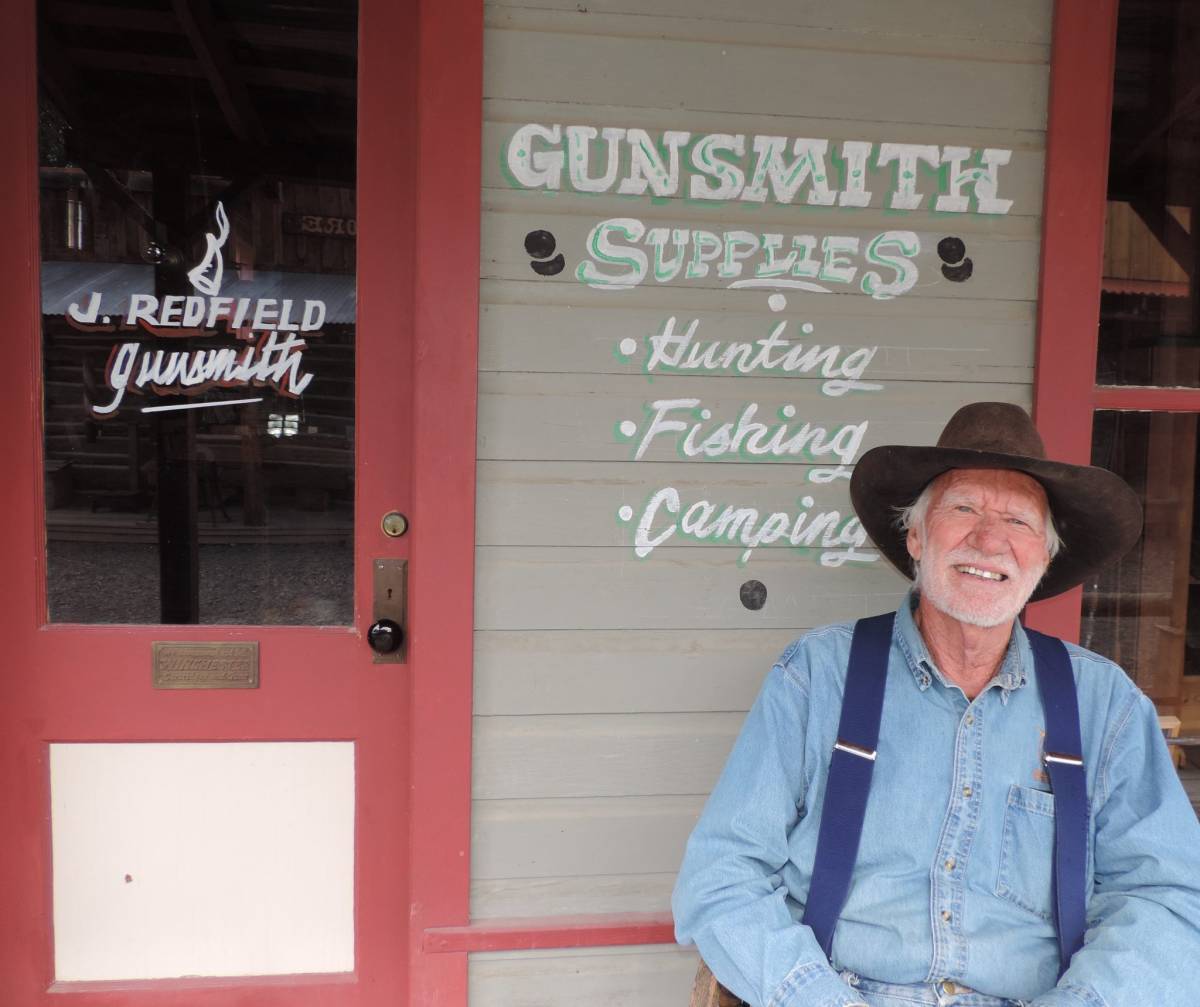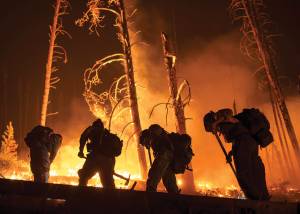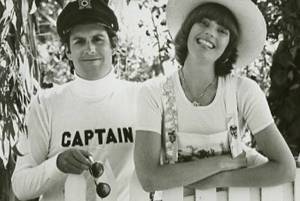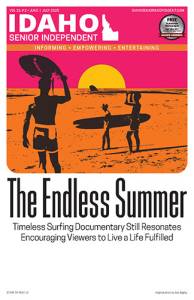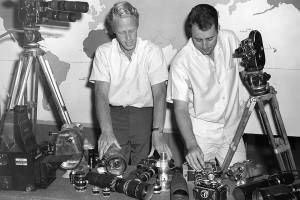by DIANNA TROYER
[caption: Richard Fike’s passion for artifacts began in childhood.]
As we listen to the hiss of a forge and marvel at a farrier pounding and shaping a red-hot glowing horseshoe, gunfire suddenly erupts from a nearby saloon at Adobe Flats, a re-created historic town near Montrose, Colo.
It is a typical day at the Museum of the Mountain West, where volunteer docents become a character from a frontier era. Like museum founder Richard Fike, they look like time travelers from the late 1800s.
“Many of our 30 volunteer docents wear period clothing to help visitors feel like they’re in an authentic western frontier town,” says Fike, wearing a timeless cowboy hat and boots and jeans with suspenders.
After buying property near Montrose in 1996, he had more than a dozen historic structures or storefronts moved to the site, including a hotel, school, church, laundry, medical offices, general store, livery, and a schoolhouse. Then he filled the buildings with more than 500,000 artifacts, dating from about 1880 to 1930.
The museum earned a 2016 Certificate of Excellence from Trip Advisor last year.
“Most of the items around here are from my personal collections,” says Fike, 77, a retired archaeologist, who established a non-profit foundation to run the site. “I’ve been a collector since I was 4 and love teaching about history. People come and see what we’ve done here and sometimes donate their own historical items.”
Fike’s passion for artifacts began in childhood.
“When I was 4, my father was working for the Alaska Department of Highways. We were in Skagway, and I found a metal clock made in the 1850s in a store. It had mother-of-pearl inlay and a notation on the back that it had been cleaned in 1898 and had been in the Klondike gold rush,” he says. “My mom bought it for me, and it’s in my living room.”
Fike’s fascination for the past led him to an archaeological career throughout the West with the Bureau of Land Management until he had time to establish the museum.
Long before western towns like Adobe Flats emerged, Ute Indians roamed the area. To take a closer look at their lifestyle, we drive a few miles to the newly remodeled Ute Indian Museum.
Dioramas, historic clothing, tools, and bows and arrows transport us to the tumultuous time when Chief Ouray led the Utes from roaming western Colorado to settling on several reservations.
The museum is located on the original homestead site, where Ouray and his wife, Chipeta, lived. Outside the museum, we see Chipeta’s crypt and stroll around a native plants garden, past teepees and a memorial to the Spanish conquistadors who explored the area in 1776.
At the museum, docent–led tours can be arranged to the nearby Shavano Valley Rock Art Site, where detailed petroglyphs depict the tribe’s sacred springtime bear dance.
Surrounding Montrose, the trails that cowboys, Indians, and ranchers once explored led to one of the deepest and steepest canyons in the West, Black Canyon, which plunges 2,700 feet down in some places.
Today, these same trails are shared by hikers, mountain bikers, UTV riders, and equestrians who cherish the area as much as those who first explored the land more than a century ago.

